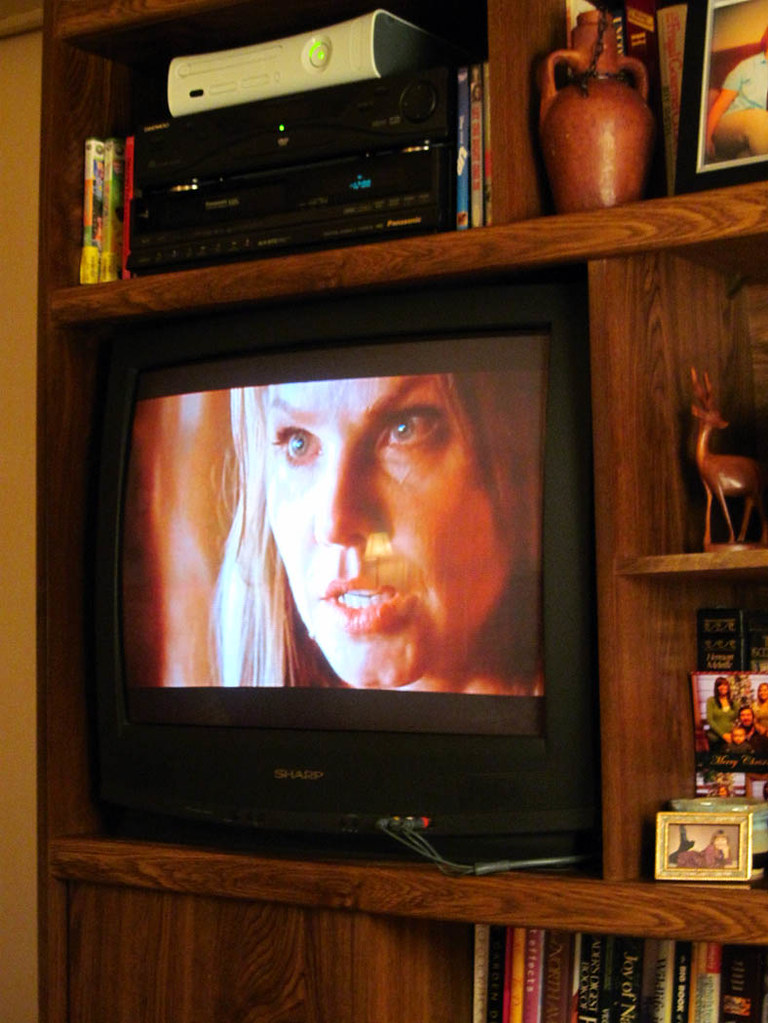
There are few television series that ignite the imagination, challenge perceptions, and captivate audiences with the sheer force of their narrative ambition quite like ‘Lost’. From its dramatic debut in 2004, this groundbreaking ABC phenomenon redefined what serialized storytelling could achieve, setting a new benchmark for intricate plotting, character development, and world-building that continues to resonate with fans and creators alike. It wasn’t just a show; it was an experience, an enigma wrapped in an island, compelling viewers to analyze every detail and debate every twist.
Much like the meticulous design and powerful performance of a legendary vehicle, ‘Lost’ was a triumph of creative engineering and artistic vision. It masterfully blended diverse storytelling elements, propelled by a dynamic cast and anchored by a mysterious setting, to create a ride unlike any other on the small screen. The passion and precision poured into every aspect of its production, from the initial concept to the intricate score, forged a cultural artifact that is still discussed and admired today for its audacity and depth.
In this first part of our in-depth exploration, we’ll rev the engines and take a closer look under the hood, appreciating the foundational elements that made ‘Lost’ a true marvel. We’ll trace its origins, dissect its multi-layered narrative design, celebrate the craftsmanship of its ensemble, and delve into the vibrant heart of its setting and the complex machinery of its central mythology. Prepare to embark on a journey that reminds us why this series, once experienced, is truly ‘Lost, But Never Forgotten.’

1. **The Genesis of a Phenomenon: Conception and Vision**The journey of ‘Lost’ began not with a crash, but with an idea from Lloyd Braun, then head of ABC. While vacationing in Hawaii in 2003, Braun envisioned a television adaptation that would fuse the survivalist themes of the 2000 Tom Hanks film ‘Cast Away’ with the competitive reality elements of ‘Survivor.’ He presented his concept as ‘parts Cast Away, Survivor, and Gilligan’s Island, with a Lord of the Flies element,’ a pitch that, while initially met with skepticism, held a spark of potential for senior vice president Thom Sherman.
After an initial script from writer Jeffrey Lieber, which was deemed unsatisfactory, Braun turned to J. J. Abrams in January 2004. Abrams, known for his work on ‘Alias,’ was brought in to craft a new pilot script. He agreed to the project on the crucial condition that the series would incorporate a supernatural angle and that he would have a writing partner. This led to his collaboration with Damon Lindelof, who, alongside Abrams, meticulously created the series’ style and characters, outlining major mythological ideas and plot points in a comprehensive series bible designed for an ideal four-to-five-season run.
This novel idea of a multi-year story arc drew inspiration from ‘Babylon 5,’ showcasing an ambition rarely seen in network television. To secure ABC’s commitment, Lindelof and Abrams initially downplayed the show’s complex serialization, assuring the network that each episode would be self-contained and require ‘NO knowledge of the episode(s) that preceded it,’ a strategic ‘ruse’ that ultimately convinced ABC to greenlight the project. The pilot episode, a monumental undertaking, reportedly cost between US$10 and $14 million, making it the most expensive in the network’s history.
The world premiere of this audacious pilot took place on July 24, 2004, at San Diego Comic-Con, generating significant buzz. Its broadcast debut on September 22, 2004, immediately cemented its status as one of the biggest critical and commercial successes of the 2004 television season. ‘Lost,’ alongside other new hits like ‘Desperate Housewives’ and ‘Grey’s Anatomy,’ played a pivotal role in reversing ABC’s flagging fortunes, demonstrating that bold, serialized storytelling could captivate a mass audience, even if it quickly contradicted the initial promises made to the network.
Read more about: The Quest for Answers: Why ‘Lost’ Continues to Captivate Audiences with its Unfolding Mysteries
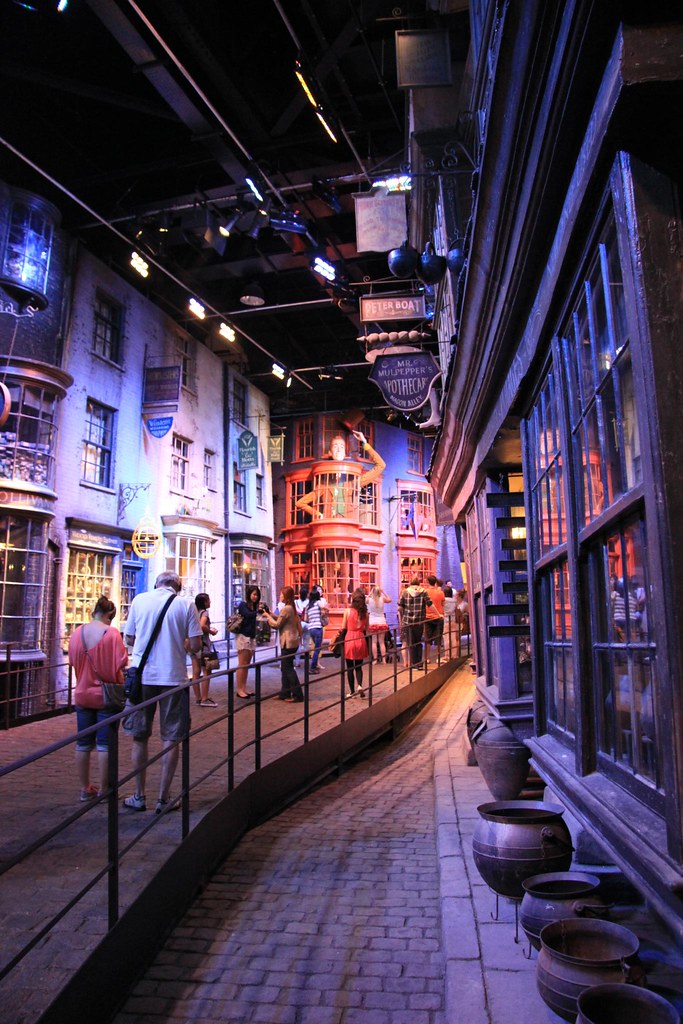
2. **A Symphony of Storytelling: Lost’s Genre-Hybrid Masterpiece**’Lost’ was a masterclass in genre fusion, a truly hybrid creation that defied easy categorization and kept audiences on the edge of their seats for six thrilling seasons. The series fluidly wove together elements of Adventure, Mystery, Science fiction, Serial drama, Supernatural, Survival, and Thriller, forming a rich tapestry that felt both familiar and utterly unique. This audacious blending of genres allowed the show to explore a vast range of human experiences and speculative concepts, maintaining an unpredictable narrative momentum.
The show’s fundamental design typically featured a primary storyline unfolding on the mysterious island. This core narrative was then skillfully augmented by flashback or flashforward sequences, and later, flash-sideways narratives. These temporal shifts provided crucial additional insight into the involved characters, deepening their backstories, motivations, and interconnections, allowing the complex web of relationships and individual journeys to evolve organically.
At its very core, ‘Lost’ presented a complex and cryptic storyline, a puzzle box that viewers were invited to unravel week after week. This intricate narrative architecture, brimming with unanswered questions and tantalizing clues, formed the bedrock for widespread discussions and fervent theorizing among its devoted fanbase. The show’s creators actively encouraged this engagement, with writers and stars often interacting with fans online, further fueling the speculative fires.
These fan theories became a significant cultural phenomenon in themselves, attempting to decipher the nature of the island, the origins of the ‘Monster’ and ‘Others,’ the meaning of the recurring numbers, and the ultimate reasons behind the plane crash and the survivors’ miraculous escape. While the creators themselves publicly rejected some of the more common theories – such as the idea that the survivors were in purgatory, or that aliens or reality TV influenced events – the sheer volume and passion of this theorizing underscored the depth of engagement the show commanded, a testament to its compelling multi-genre storytelling.

3. **Casting the Iconography: Crafting an Unforgettable Ensemble**The creative “engineering” behind ‘Lost’ extended profoundly into its casting, where a large ensemble was meticulously assembled not just for talent, but also for the flexibility and diversity it offered the narrative. With 324 people initially on board Oceanic Flight 815, leading to 70 initial survivors, the show embraced a vast canvas of characters. This approach, while making ‘Lost’ more expensive to produce, afforded the writers immense flexibility in story decisions, enabling ‘more interactions between characters and create more diverse characters, more back stories, more love triangles,’ as noted by executive producer Bryan Burk.
‘Lost’ was intentionally conceived as a multicultural show, featuring an international cast that reflected a global appeal. The first season alone boasted 14 regular speaking roles, a testament to its ambition. While no single actor appeared in all 121 episodes, many of these initial actors remained central figures throughout the show’s run, evolving through flashbacks, flashforwards, and alternate timelines, embodying the spirit of the series’ enduring appeal.
The casting process itself was highly dynamic and often shaped by the talents of the auditioning actors. For instance, the main character Jack, initially slated to die in the pilot, was kept alive due to ABC executive insistence. Kate was originally conceived as a middle-aged businesswoman. Dominic Monaghan, who auditioned for the role of Sawyer—then imagined as a slick city con man—so impressed producers that the character of Charlie, a washed-up rock star, was crafted specifically for him. Similarly, Jorge Garcia’s audition for Sawyer led to the creation of the part of Hurley tailored just for him.
Josh Holloway’s unique ‘edge’ during his Sawyer audition, including reportedly kicking a chair when he forgot his lines and displaying an authentic Southern accent, led to the character being rewritten to fit his persona. Yunjin Kim, initially auditioning for Kate, inspired the creation of Sun, with Daniel Dae Kim cast as her husband, Jin. Even characters like Sayid, played by Naveen Andrews, were not in the original script but were written in, while Locke and Michael were conceived with their eventual actors already in mind. This adaptive, character-first approach ensured a richly diverse and deeply engaging ensemble from the very beginning.

4. **Oahu’s Unseen Star: The Hawaiian Island as a Character**Much like a high-performance vehicle’s track record is intrinsically linked to its proving ground, the unique identity and visual splendor of ‘Lost’ were inseparable from its primary filming location: the Hawaiian island of Oahu. The choice to film ‘almost entirely’ on this single island was a stroke of genius, offering ‘easily accessible, wide diversity of filming locations’ that allowed the island itself to become far more than just a backdrop; it was an active character, a living entity that breathed life into the series’ enigmatic atmosphere.
The aesthetic design of the show was profoundly influenced by Oahu’s natural beauty and varied topography. The original island scenes for the iconic pilot episode, depicting the immediate aftermath of the crash, were captured at Mokulē’ia Beach, nestled near the island’s northwest tip. As the series progressed, beach scenes shifted to the more secluded, picturesque spots of the famous North Shore, each location lending its own distinct texture and mood to the unfolding drama, enhancing the sense of isolation and wonder.
Beyond its stunning beaches and lush jungles, Oahu’s versatility allowed for incredible narrative immersion. Early cave scenes in the first season were brought to life on a sound stage constructed within a former Xerox parts warehouse, cleverly repurposed to create the enclosed, claustrophobic environments necessary for the survivors’ initial refuge. Later, the production moved to the Hawaii Film Office-operated Hawaii Film Studio, where intricate sets for the Dharma Initiative’s ‘Swan Station’ and ‘Hydra Station’ interiors were meticulously built, adding layers to the island’s scientific enigma.
Remarkably, the urban areas in and around Honolulu were transformed into stand-ins for a multitude of global locations, illustrating the ingenious design of the production. These included settings meant to be California, New York, Iowa, Miami, South Korea, Iraq, Nigeria, the United Kingdom, Paris, Thailand, Berlin, Maldives, and even Australia. For example, Sydney Airport scenes were filmed at the Hawaii Convention Center, and a World War II-era bunker doubled as both an Iraqi Republican Guard installation and a Dharma Initiative research station. This seamless transformation of Oahu into a global stage underscored its pivotal role in the visual storytelling, making it truly the unseen star of ‘Lost.’
.jpg)
5. **The Engine Room: Showrunners and Executive Producers Behind the Scenes**Behind every finely tuned machine is a team of brilliant engineers, and ‘Lost’ was no exception. The series was a collaborative powerhouse, produced by ABC Studios, Bad Robot, and Grass Skirt Productions. At the helm of this intricate operation were the executive producers, a formidable group that included Damon Lindelof, J. J. Abrams, Bryan Burk, Carlton Cuse, Jack Bender, Jeff Pinkner, Edward Kitsis, Adam Horowitz, Jean Higgins, and Elizabeth Sarnoff. Lindelof and Cuse, in particular, served as the primary showrunners, steering the narrative course with remarkable vision and consistency.
J. J. Abrams, a co-creator, was instrumental in the show’s initial conception and pilot. His influence established the series’ distinctive sound opening and title card, which were notably inspired by ‘The Twilight Zone,’ immediately signaling the show’s mysterious and atmospheric tone. However, Abrams’s commitments led him to withdraw from day-to-day production midway through the first season to direct ‘Mission: Impossible III.’ This transition left Lindelof and new executive producer Carlton Cuse to largely develop the overall mythology and narrative complexities themselves, a challenge they met with extraordinary success.
The development phase of ‘Lost’ was fraught with tight deadlines, having been commissioned late in the 2004 season’s cycle. Despite these pressures, the creative team demonstrated impressive flexibility. They were able to modify or even create entirely new characters to accommodate actors they were keen to cast, a testament to their adaptability and character-driven approach, as seen in the casting stories of Charlie, Hurley, and Sawyer. This agile approach allowed them to capitalize on talent and further enrich the ensemble.
Lindelof and Cuse became the architects of the series’ expansive universe, carefully weaving together the multi-season arc they had envisioned in the series bible. Their collaborative leadership ensured that the show’s numerous mysteries and character journeys progressed with a coherent, albeit incredibly complex, vision. They were the master mechanics, ensuring that every plot point, every character revelation, and every mythological twist contributed to the grand design of ‘Lost,’ cementing their legacy as pivotal figures in modern television.
6. **The Fabric of Reality: Unraveling Lost’s Intricate Mythology**At the very heart of ‘Lost’ lay a captivating, often mind-bending mythology, a carefully constructed web of mysterious elements that propelled the narrative and fueled endless speculation. These elements, described by the creators as composing the ‘mythology of the series,’ were firmly rooted in science fiction or supernatural phenomena, inviting viewers to actively engage in deciphering the island’s secrets. It was this intricate fabric of reality that made ‘Lost’ such an intellectually stimulating and endlessly discussed series.
Central to this mythology were iconic, enigmatic features. The terrifying yet intelligent ‘Smoke Monster’ roamed the island, its true nature slowly unspooling over seasons. There was also the mysterious group of inhabitants whom the survivors dubbed ‘The Others’ or ‘Natives,’ whose history and intentions were deeply intertwined with the island’s power. The scientific organization known as the ‘Dharma Initiative’ left behind several research stations, each revealing pieces of a larger, elaborate puzzle, hinting at decades of scientific experimentation and control.
Beyond these tangible mysteries, ‘Lost’ introduced a sequence of numbers (4, 8, 15, 16, 23, 42) that recurred frequently in the lives of the characters across different timelines, hinting at a predetermined fate or a grand design. Furthermore, the concept of ‘personal connections (synchronicity) between the characters of which they are often unaware’ added another layer of intrigue, suggesting that their arrival on the island was no mere accident but part of a larger, cosmic plan.
This complex and cryptic storyline proved to be incredibly fertile ground for fan engagement. Encouraged by the show’s writers and stars who often interacted with their audience online, viewers and critics alike passionately engaged in ‘widespread theorizing in an attempt to unravel the mysteries.’ Theories abounded regarding ‘the nature of the island, the origins of the ‘Monster’ and the ‘Others’, the meaning of the numbers, and the reasons for both the crash and the survival of some passengers,’ illustrating the profound intellectual curiosity ‘Lost’ inspired. While creators occasionally dismissed common theories, such as the purgatory concept, the sheer act of theorizing became a cultural phenomenon in itself.
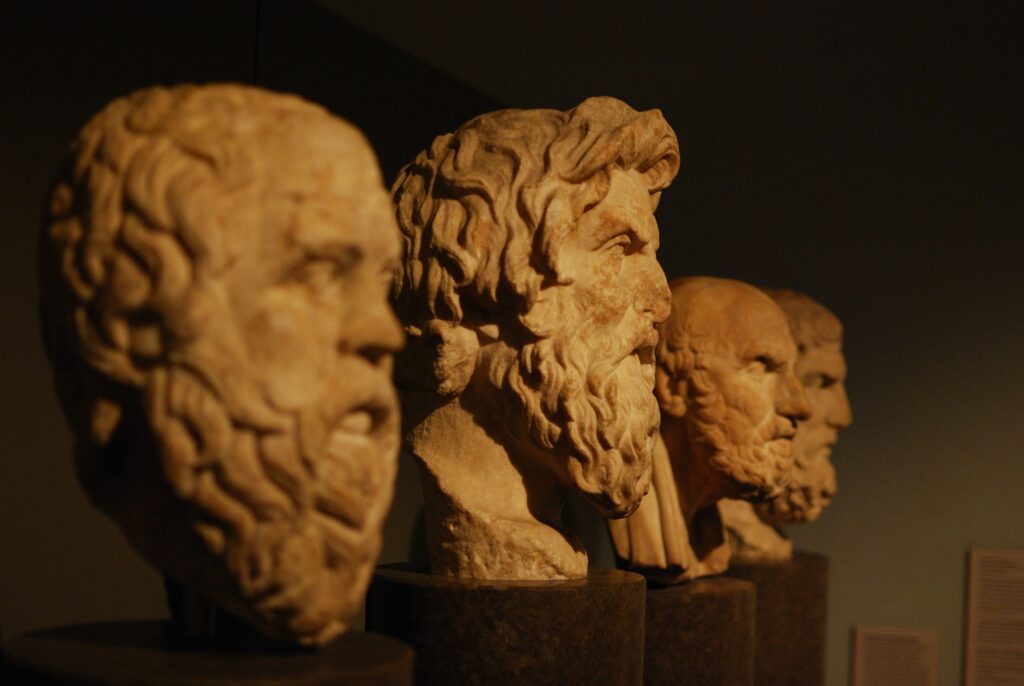
7. **Subtextual Underpinnings: Recurring Elements and Philosophical Depth**Beyond its immediate mysteries and character dramas, ‘Lost’ was meticulously crafted with a rich layer of ‘literary and philosophical subtext’ that deepened its resonance. These recurring elements and motifs, while not always directly affecting the story’s progression, significantly expanded the show’s intellectual and emotional landscape, inviting viewers to ponder universal themes alongside the unfolding plot. It’s akin to the nuanced engineering of a classic car, where subtle design choices enhance its character and legacy.
One prominent motif was the frequent appearance of black and white, a powerful visual shorthand that reflected the dualism inherent ‘within characters and situations.’ This symbolic contrast was explicitly referenced by the Man in Black with his ‘white and black rocks,’ an ‘inside joke’ that underscored the eternal struggle between opposing forces. Another consistent theme was ‘rebellion,’ epitomized by various characters, particularly Kate, showcasing a defiance against authority and circumstance that drove many key plot points and character arcs.
The series also consistently explored ‘dysfunctional family situations,’ especially those centered around ‘the fathers of many characters,’ revealing the deep-seated emotional wounds and formative experiences that shaped nearly all the main protagonists. These complex familial relationships provided a profound human anchor to the fantastical elements of the island, making the characters’ struggles feel deeply relatable despite their extraordinary circumstances.
Furthermore, ‘Lost’ grappled with profound philosophical questions. The tension between ‘coincidence versus fate’ was a recurring debate, most overtly ‘revealed through the juxtaposition of the characters Locke and Mr. Eko.’ Similarly, the enduring ‘conflict between science and faith’ formed a central ideological battleground, embodied by ‘the leadership tug-of-war between Jack and Locke and their stark disagreements on subjects such as the hatch, the button, and leaving the island.’ The struggle between good and evil, personified by Jacob and the Man in Black, was the ultimate philosophical core, shaping the island’s destiny.
The show’s intellectual depth was further enriched by numerous ‘references to numerous works of literature,’ including direct mentions and discussions of novels like John Steinbeck’s ‘Of Mice and Men,’ often seen being read or referenced by Sawyer. Moreover, many characters’ names were deliberate allusions to ‘famous historical thinkers and writers,’ such as John Locke (after the philosopher), Danielle Rousseau (after Jean-Jacques Rousseau), Desmond David Hume (after David Hume), and Daniel Faraday (after Michael Faraday). This intricate layering of subtext cemented ‘Lost’s’ status as a show that was as rewarding to analyze as it was thrilling to watch.
The journey through the intricate world of ‘Lost’ doesn’t end with its foundational elements; indeed, that’s where the true adventure begins. Much like a meticulously engineered vehicle designed for exploration beyond the beaten path, ‘Lost’ continuously pushed the boundaries of television storytelling. It invited viewers to explore not just the physical depths of its mysterious island, but the very depths of narrative innovation and cultural impact. As we shift gears into this second part of our deep dive, we’ll unveil the progressive evolution of its storytelling devices, peel back more layers of its captivating mythology, and chart the indelible footprint it left. Prepare to navigate the currents of its narrative brilliance and witness how ‘Lost’ truly became a legend that will never be forgotten.

8. **Evolution of Narrative Devices: From Flashbacks to Flash-Sideways**One of ‘Lost’s’ most profound contributions to television was its audacious and ever-evolving approach to narrative structure, pushing beyond conventional storytelling. Early seasons masterfully utilized flashbacks, intricately weaving character pasts with present island dilemmas. This innovative layering allowed dynamic exploration of character motivations and the interconnectedness of disparate lives, enriching the narrative tapestry.
The narrative engine gained a powerful new gear in Season 3 with the introduction of “flashforwards.” These tantalizing glimpses into a post-island future shattered expectations, adding a thrilling layer of mystery and urgency. Viewers grappled with *how* characters escaped and *why* Jack believed they “have to go back,” compelling audiences to constantly re-evaluate present events.
As the series progressed, ‘Lost’ continued its narrative experimentation with “two timelines” in Season 5. This sophisticated maneuver depicted island survivors erratically jumping through time while others navigated events in 2007. This complex, almost quantum leap in storytelling demanded incredible viewer engagement, forcing a constant synthesis of events unfolding in different eras.
The final act of narrative innovation arrived in Season 6 with the “flash-sideways” narrative. This ingenious device presented an alternate reality where Oceanic 815 never crashed. Ultimately revealed as a form of purgatory, these sequences provided a poignant and philosophically rich conclusion, allowing characters to reunite and find peace. This progression cemented ‘Lost’s’ legacy as a vanguard of televised narrative design.
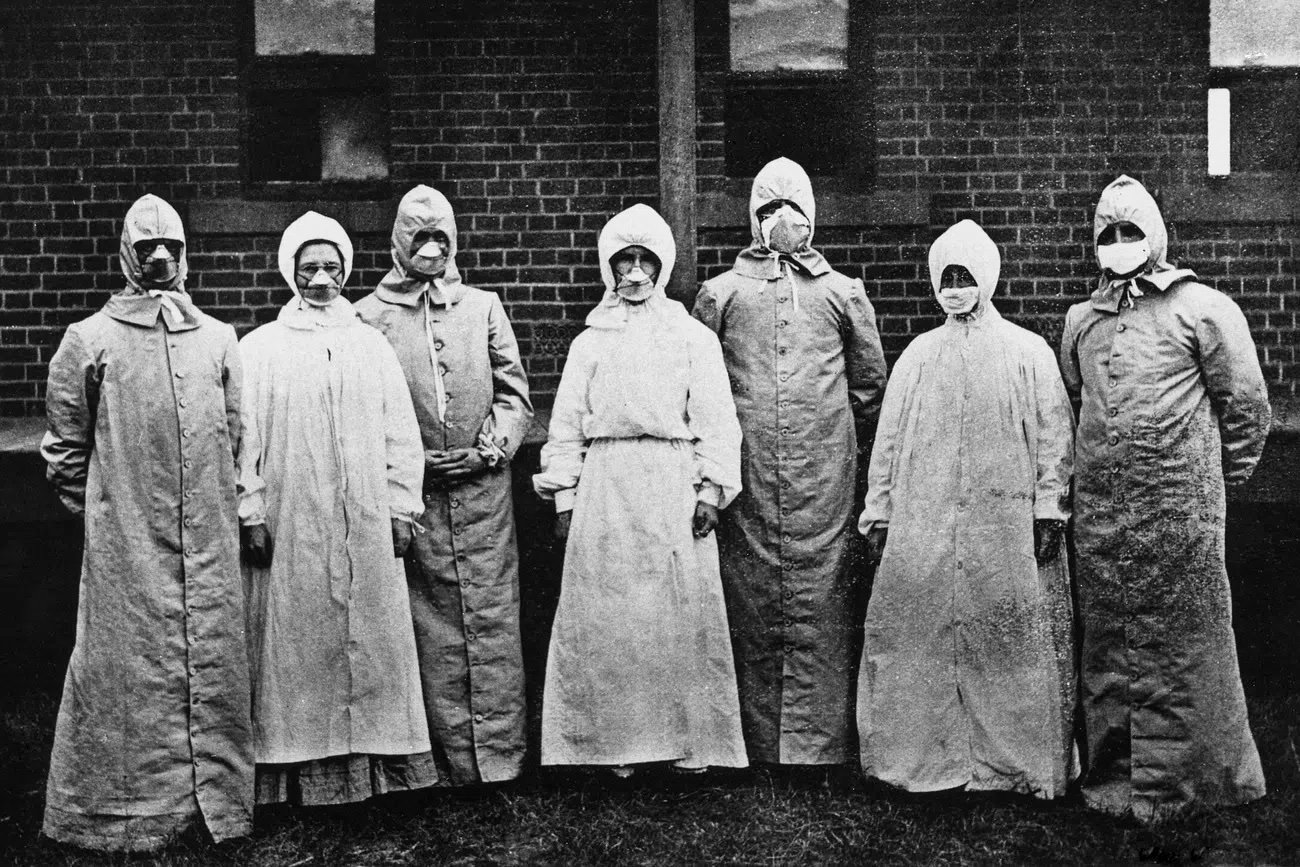
9. **The Mythology Deepens: Unraveling the Island’s Core Secrets**While Section 1 touched upon foundational mythological elements, the true genius of ‘Lost’ lay in its slow, deliberate, and ultimately profound unraveling of these mysteries across six seasons. The series transformed initial enigmatic features—the “Smoke Monster,” “The Others,” and the “Dharma Initiative”—into cornerstones of a deeply woven narrative cosmos. Each season meticulously chipped away at the unknown, revealing pieces of a larger, elaborate puzzle.
As the narrative matured, the island’s secrets coalesced around an ancient conflict. Season 6 dramatically pulled back the curtain, revealing the origins of the island’s power and the eternal struggle between twin brothers, Jacob and the Man in Black. The Man in Black’s transmogrification into the “Smoke Monster” provided a chilling origin story for the island’s most terrifying entity.
The “Dharma Initiative,” once a tantalizing hint of past scientific experimentation, was revealed as integral to this larger mythological tapestry. Through its research stations, viewers gained a deeper understanding of scientific attempts to comprehend the island’s properties. The push and pull between science and faith found its ultimate expression in these revelations.
Furthermore, the concept of “candidates” for the island’s protection, chosen by Jacob, provided a new lens for the Oceanic Flight 815 survivors. It suggested a grand design, reinforcing the philosophical debate between “coincidence versus fate.” The Man in Black’s mission to kill all candidates heightened stakes, culminating in a final war between good and evil.

10. **Fan Engagement and Theorizing: A Cultural Phenomenon**’Lost’ didn’t just tell a story; it created a global conversation, fostering unprecedented fan engagement and transforming television viewing into a communal, interactive experience. The show’s “complex and cryptic storyline,” brimming with “unanswered questions and tantalizing clues,” acted as an irresistible invitation for viewers to become active participants.
The series’ creators and stars actively nurtured this burgeoning fandom, often “interacting with fans online” and further fueling the “widespread theorizing.” Forums, wikis, and discussion boards buzzed with passionate debates, as viewers dissected every detail to unravel the nature of the island, the origins of the “Monster” and “The Others,” and the “meaning of the numbers (4, 8, 15, 16, 23, 42).”
This fervent theorizing even prompted creators to publicly address some of the most pervasive fan speculations. They “rejected speculation that spaceships or aliens influenced the events on the island” and dismissed the “purgatory” theory. Carlton Cuse notably “dismissed the theory that the island was a reality TV show,” while Damon Lindelof frequently “denied the theory that the ‘Monster’ was a nanobot cloud.”
The phenomenon of ‘Lost’ theorizing transcended mere plot speculation; it became a significant aspect of popular culture. It cultivated an audience hungry for intricate narratives and willing to invest intellectual energy beyond the weekly broadcast. This vibrant, analytical fandom remains a testament to ‘Lost’s’ power to ignite collective imagination.
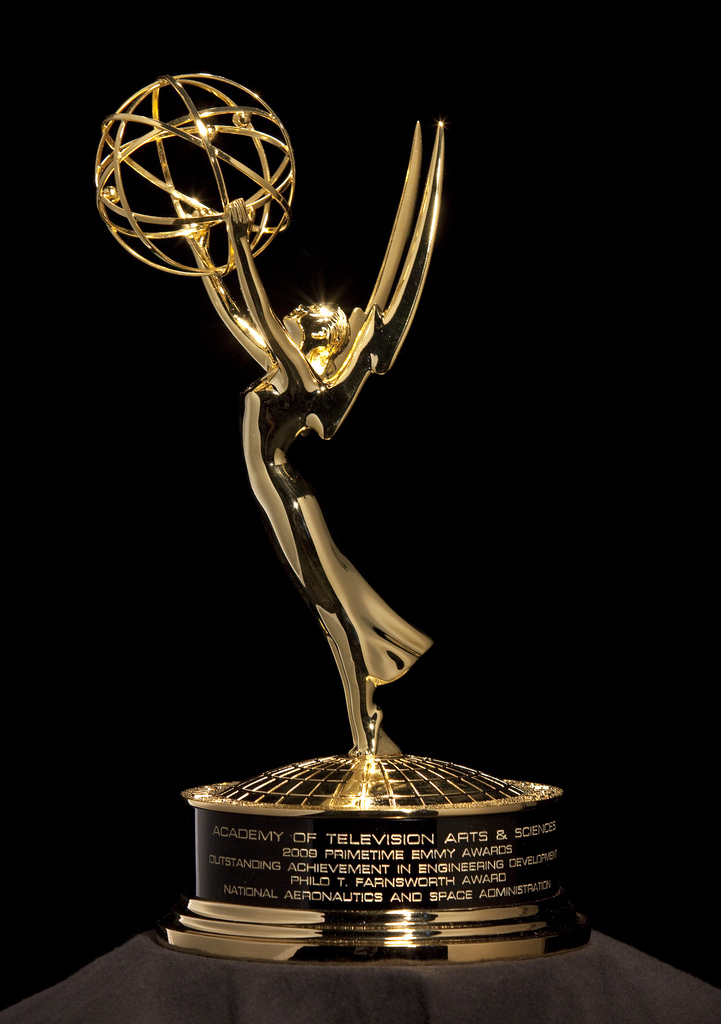
11. **Accolades and Critical Acclaim: A Legacy of Excellence**From its groundbreaking pilot, ‘Lost’ was recognized as a critical darling, consistently earning praise and cementing its place among television’s elite. Much like a meticulously crafted automobile winning awards for design and performance, the series garnered “hundreds of industry award nominations.” This widespread acclaim reflected the show’s exceptional quality across various aspects of production.
The show’s immediate impact was recognized early, securing prestigious honors such as the “Primetime Emmy Award for Outstanding Drama Series in 2005.” This was swiftly followed by the “Best American Import at the British Academy Television Awards in 2005,” highlighting its international resonance. These early awards underscored ‘Lost’s’ arrival as a major force in global entertainment.
Its consistent quality was further acknowledged with the “Golden Globe Award for Best Television Series – Drama in 2006,” solidifying its position. Beyond the recognition for the series, the ensemble cast also received praise, with the “Screen Actors Guild Award for Outstanding Performance by an Ensemble in a Drama Series” celebrating their remarkable chemistry.
Critics “regularly ranked” ‘Lost’ “as one of the greatest television series of all time,” a high honor that speaks volumes about its enduring influence and artistic merit. ‘Lost’ didn’t just win awards; it earned its place in the pantheon of television history, influencing subsequent dramas and setting a new benchmark for serialized storytelling.
Read more about: Alan Arkin, Oscar Winner and Versatile Force, Dies at 89: A Legacy of Wit, Depth, and Unforgettable Performances
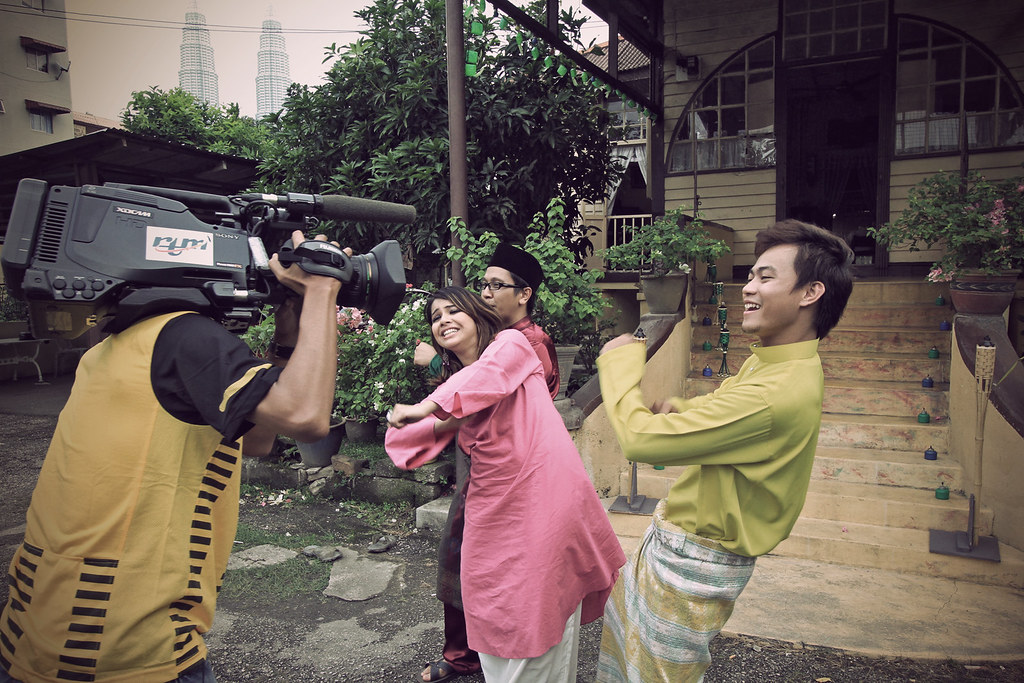
12. **Ratings and Reach: Commanding a Global Audience**Beyond its critical acclaim, ‘Lost’ was also a bona fide commercial powerhouse, consistently drawing in massive viewership numbers. It propelled ABC to new heights and demonstrated the widespread appeal of complex, serialized drama. The series was a ratings titan, proving that a show packed with mysteries and philosophical debates could indeed command a global audience.
From its debut, ‘Lost’ quickly became a sensation. The “first season had an estimated average of 16 million viewers per episode on ABC,” immediately positioning it as one of the biggest hits of the 2004 television season. This initial surge in popularity was instrumental in “reversing the flagging fortunes of ABC,” signaling that audiences were hungry for something beyond conventional television.
Even as the series matured and its mysteries deepened, ‘Lost’ maintained a formidable presence. Despite natural attrition for highly serialized shows, the “sixth and final season” still “averaged over 11 million U.S. viewers per episode.” This sustained viewership is a remarkable feat for a show demanding such intense commitment and intellectual engagement.
The immense popularity of ‘Lost’ was not confined to domestic shores; its universal themes, compelling characters, and gripping mysteries translated across cultures. Its consistent, strong ratings ensured longevity and allowed creators the freedom to fully realize their ambitious vision. It proved that intelligent, challenging television could also be immensely successful.
Read more about: 14 Fascinating Facts You Never Knew About James Arness, Star of ‘Gunsmoke’ and Beyond

13. **Beyond the Screen: Expanding the Universe Through Other Media**The immersive world of ‘Lost’ extended far beyond the weekly broadcast, creating an expansive universe that invited fans to delve deeper into its mythology. Much like a cherished automotive brand offering collectible models, the series provided “a number of related media” that enriched the viewing experience and solidified its cultural footprint. This multi-platform approach was groundbreaking.
Among these extensions were the critically acclaimed “Missing Pieces,” a series of mini-episodes offering additional insights and character moments. These digital shorts were integral parts of the ‘Lost’ narrative, demonstrating a commitment to world-building. Furthermore, the “12-minute epilogue called ‘The New Man in Charge'” provided a poignant look at the aftermath of the finale.
The creative team also pioneered innovative promotional strategies, utilizing the burgeoning digital landscape. “Lost developed an extensive collection of promotional tools,” notably including “alternate reality games, such as the Lost Experience.” These interactive online experiences blurred fiction and reality, engaging fans in real-world puzzles that paralleled the show’s mysteries.
Beyond these narrative extensions, “licensed merchandise” further solidified ‘Lost’s’ presence in popular culture. From Dharma Initiative-branded products to collectibles, these items were tangible links to a beloved universe. This comprehensive strategy ensured the ‘Lost’ universe remained vibrant and engaging long after the final episode aired.
Read more about: Mastering the Craft: A Comprehensive Guide to Common’s Diverse Career and Enduring Impact

14. **The Unforgettable Soundscape: Michael Giacchino’s Iconic Score**Every truly great work has a signature that elevates it beyond the ordinary, and for ‘Lost,’ that was its mesmerizing orchestral score by Michael Giacchino. Far more than mere background music, Giacchino’s compositions were a vital narrative component, shaping the show’s emotional landscape and infusing its mysteries with wonder and dread. It was the powerful engine driving emotional resonance.
Giacchino’s score, “performed by the Hollywood Studio Symphony Orchestra,” was a masterclass in thematic composition, incorporating “many recurring themes for subjects, such as events, locations, and characters.” These themes became instantly recognizable, acting as emotional shorthand and deepening viewer connection. Each was meticulously crafted to enhance storytelling.
What truly set Giacchino’s work apart was his ingenious use of “unusual instruments,” including “striking suspended pieces of the plane’s fuselage” for distinctive sounds. This innovative approach directly linked the show’s sound to its central premise, evoking the visceral impact of the crash and the raw, untamed nature of the island.
The sparing use of pop culture songs, favoring an “orchestral score (consisting usually of divided strings, percussion, harp)” further emphasized the show’s unique sonic identity. This deliberate choice ensured the music always served the narrative, creating an uninterrupted, immersive emotional experience. Giacchino’s iconic score is an inseparable part of ‘Lost’s’ identity.
Read more about: Beyond the Beach: Unpacking the Decade-Defining Journey and Lasting Impact of ‘Lost,’ a Series That Built a Universe and Challenged Our Perceptions
As our exploration of ‘Lost’ draws to a close, it’s clear that this was no ordinary television series. It was a cultural titan, an intricately engineered marvel that captivated millions with its innovative storytelling, profound mythology, and unforgettable characters. From the initial crash on a mysterious island to the ultimate revelation of its deepest secrets, ‘Lost’ invited us on an intellectual and emotional odyssey that transcended the screen. Its legacy is etched not just in television history, but in the collective memory of a generation of viewers who debated its every twist, celebrated its every triumph, and felt truly *lost* in its magnificent world. Like a legendary classic, ‘Lost’ remains a benchmark, reminding us that true artistry, ambition, and a willingness to challenge conventions can create something truly timeless. It was a show that asked us to believe, to question, and most importantly, to experience, and for that, it will always be found in the pantheon of unforgettable narratives.




